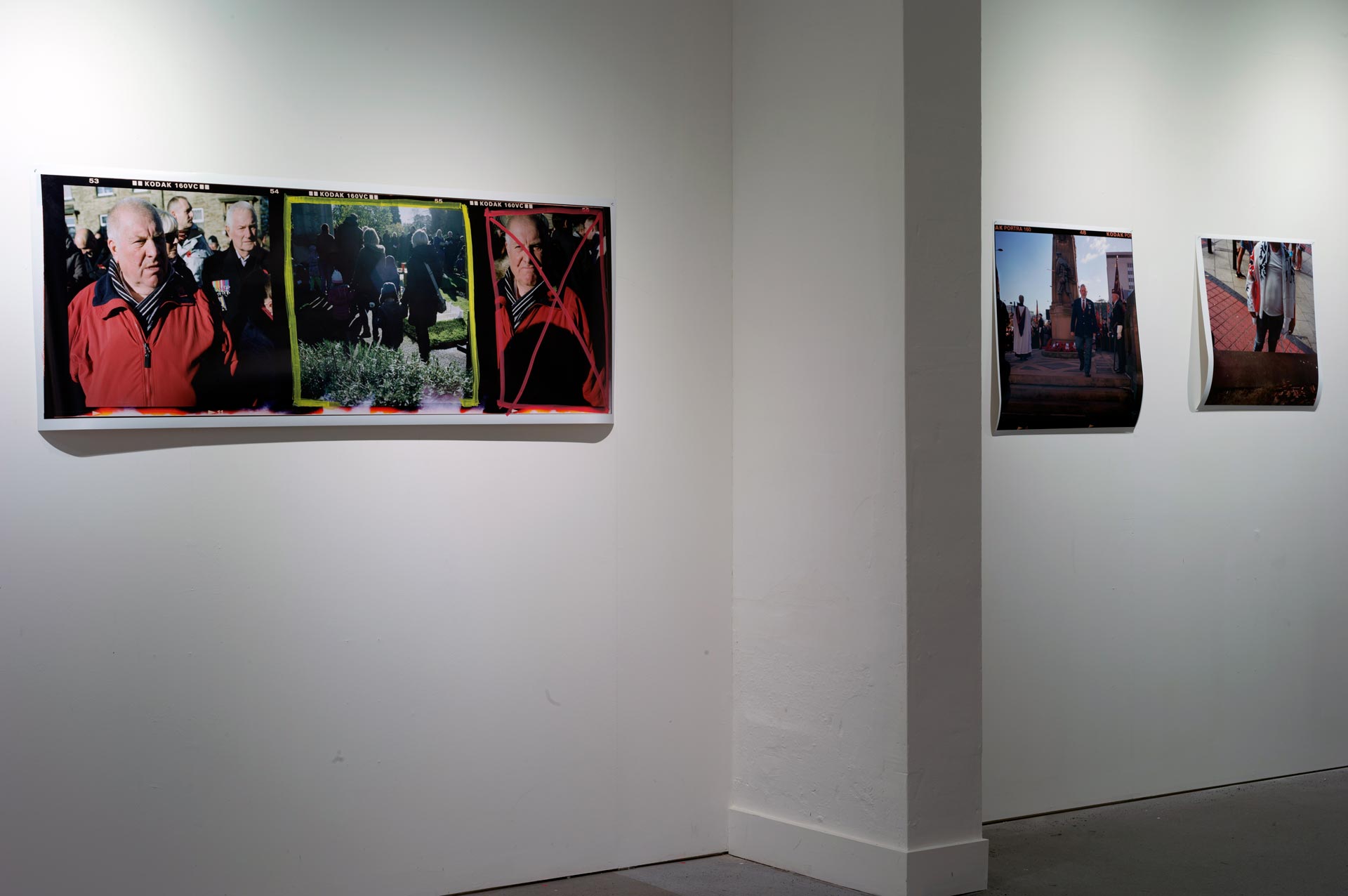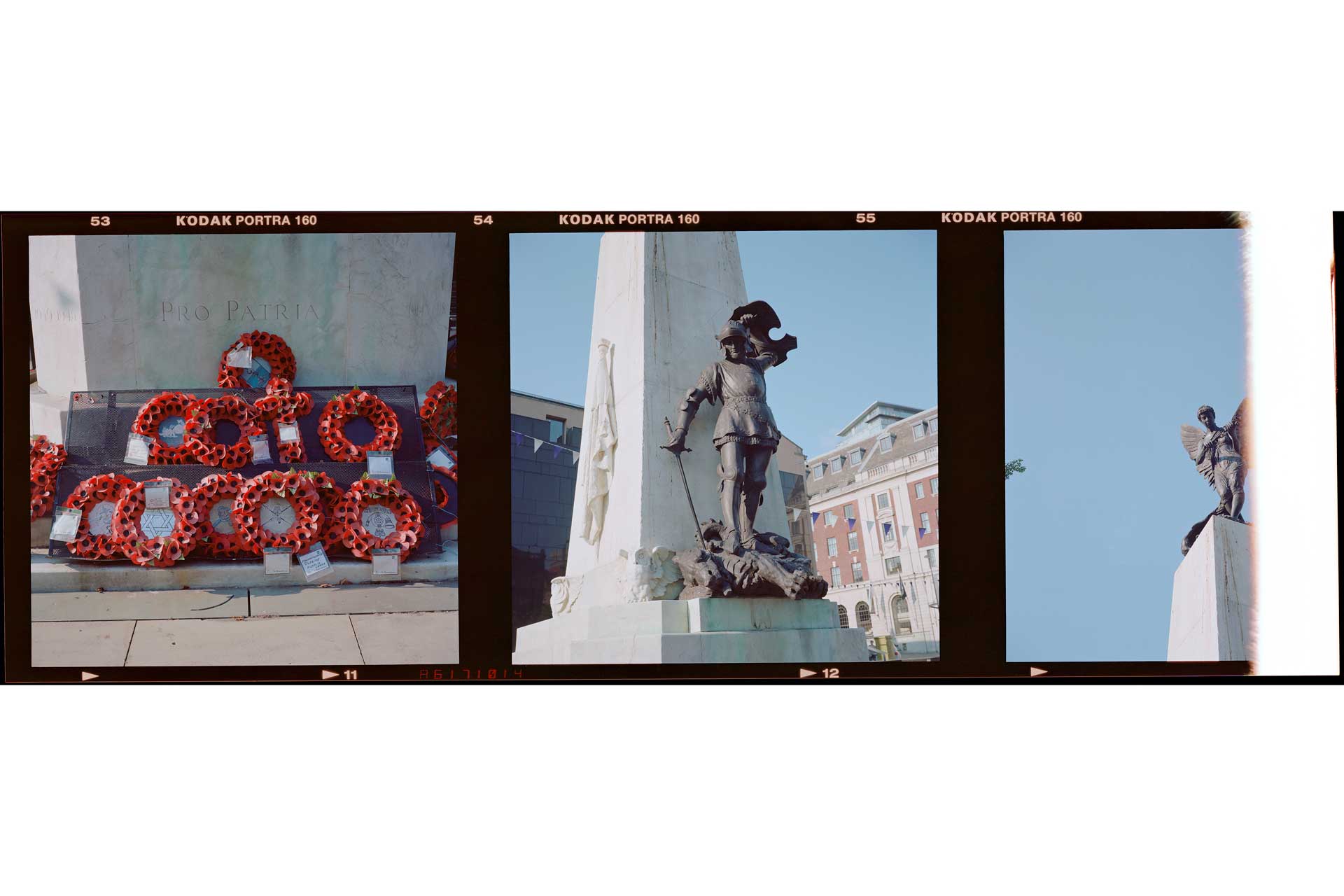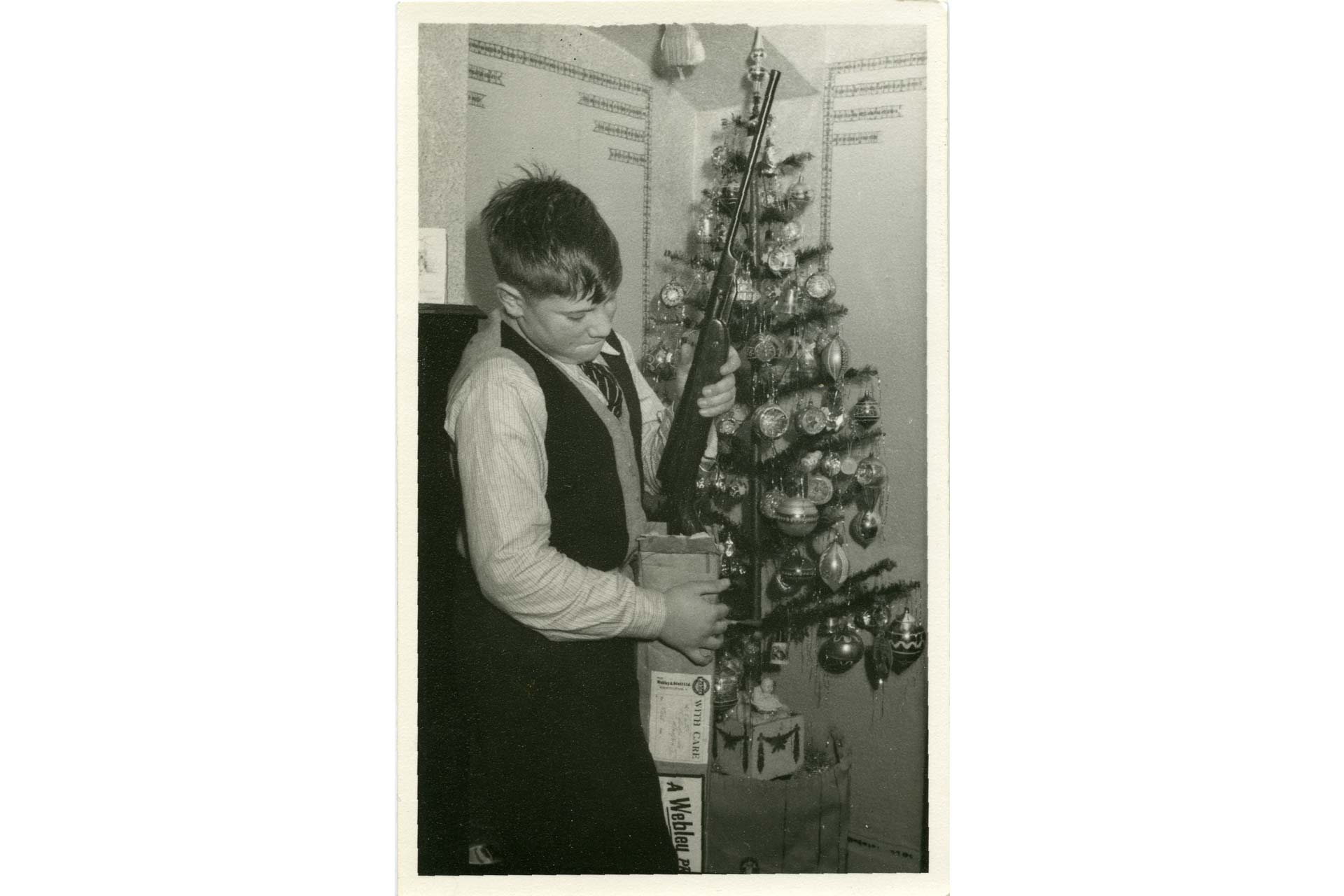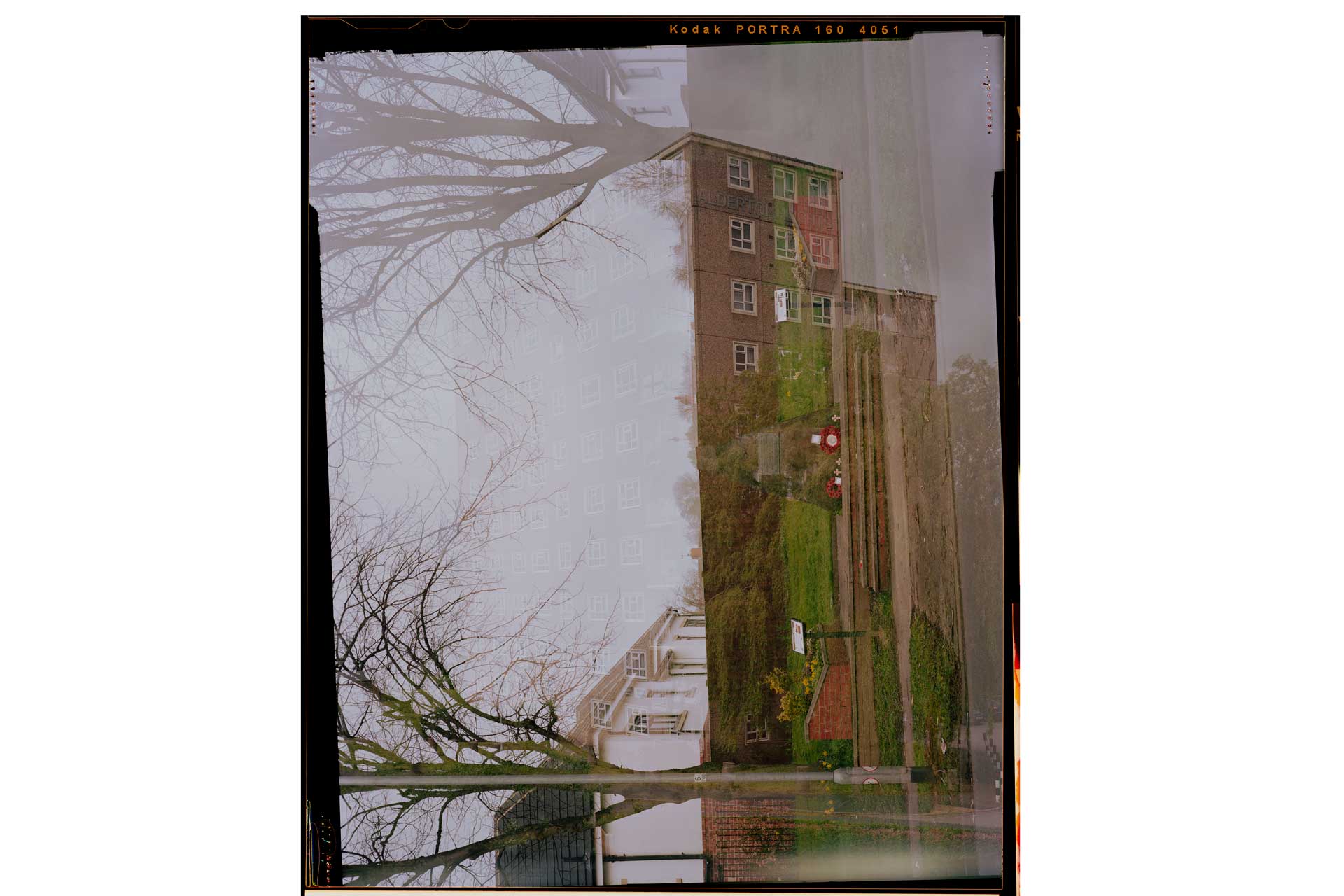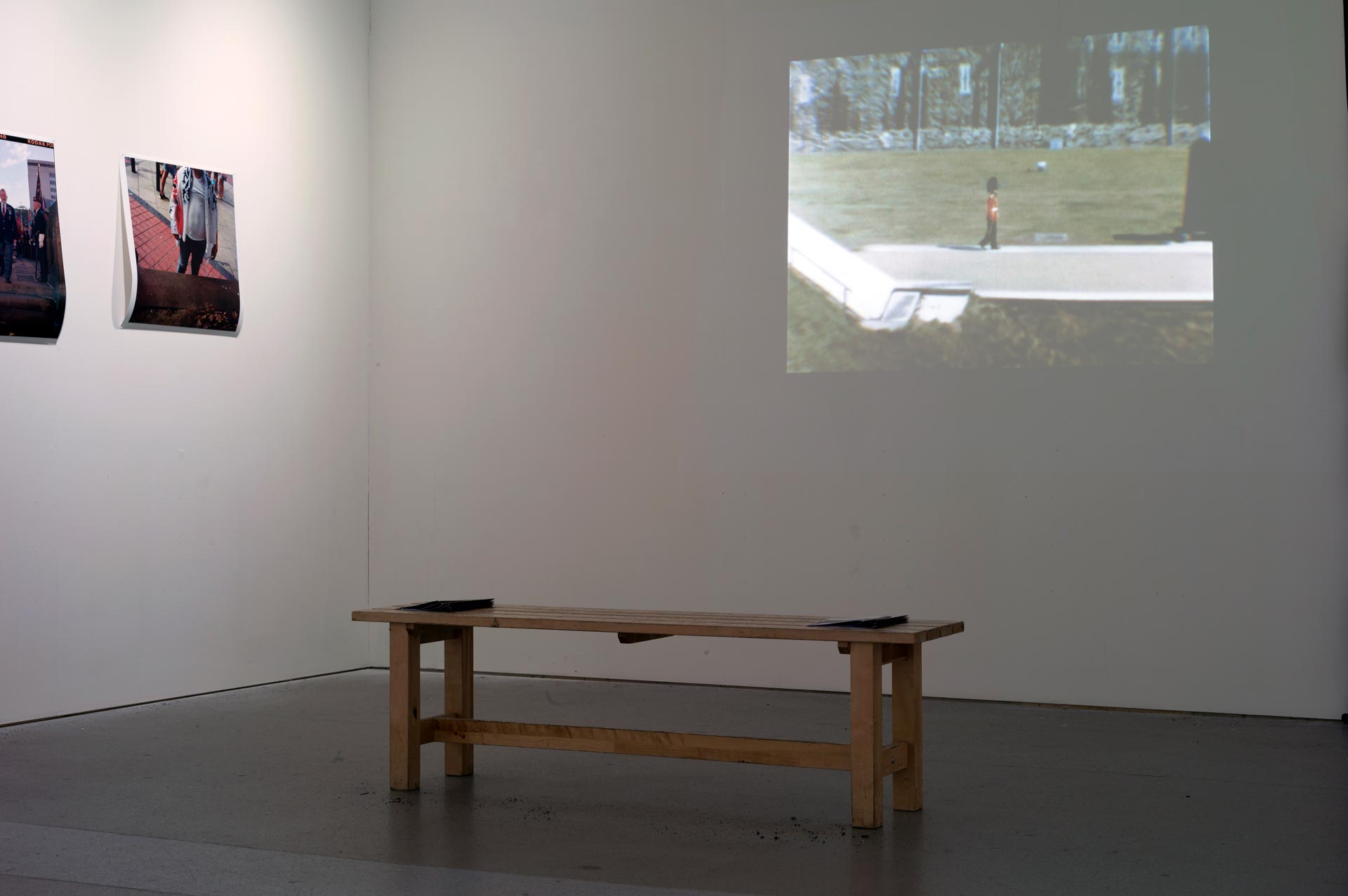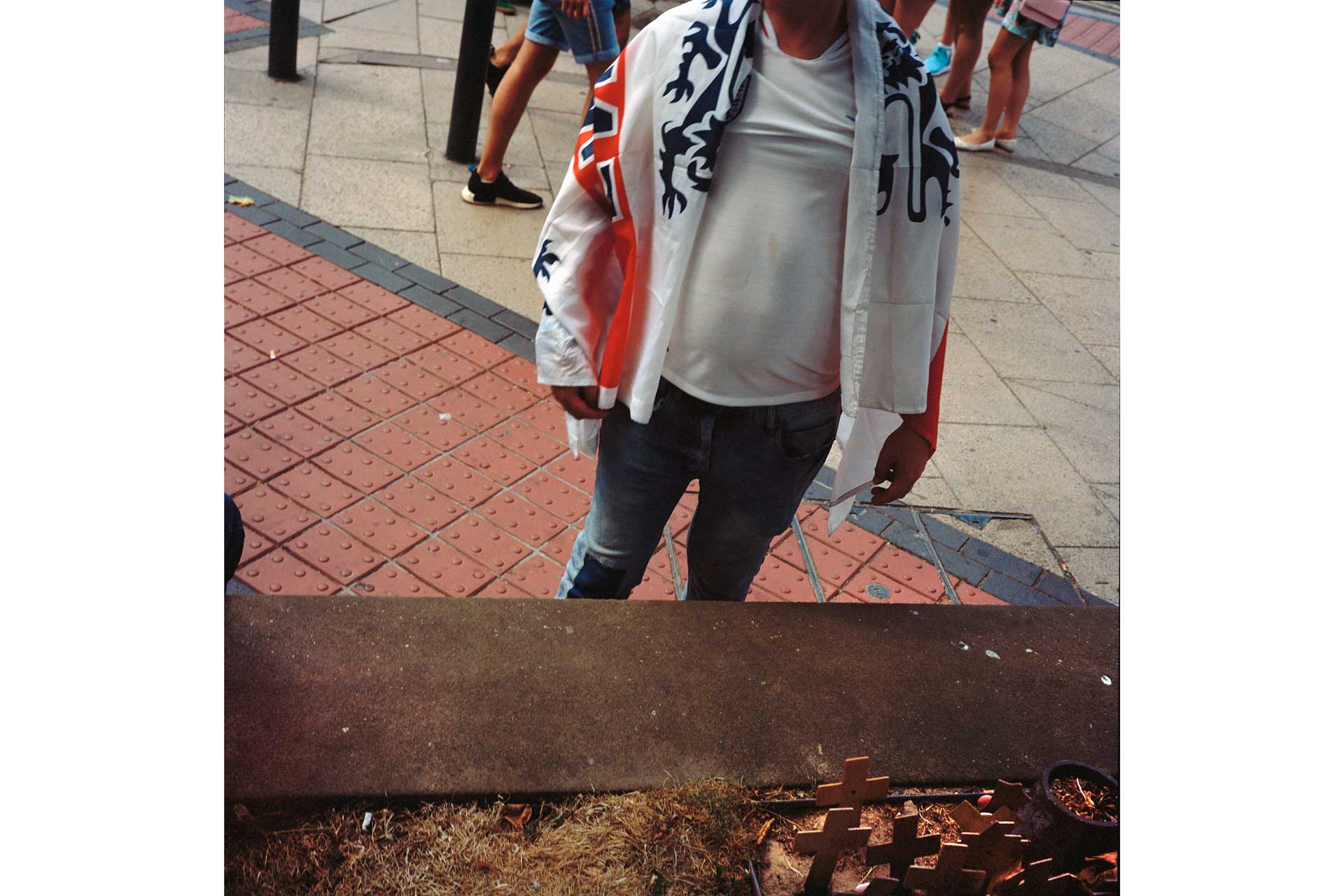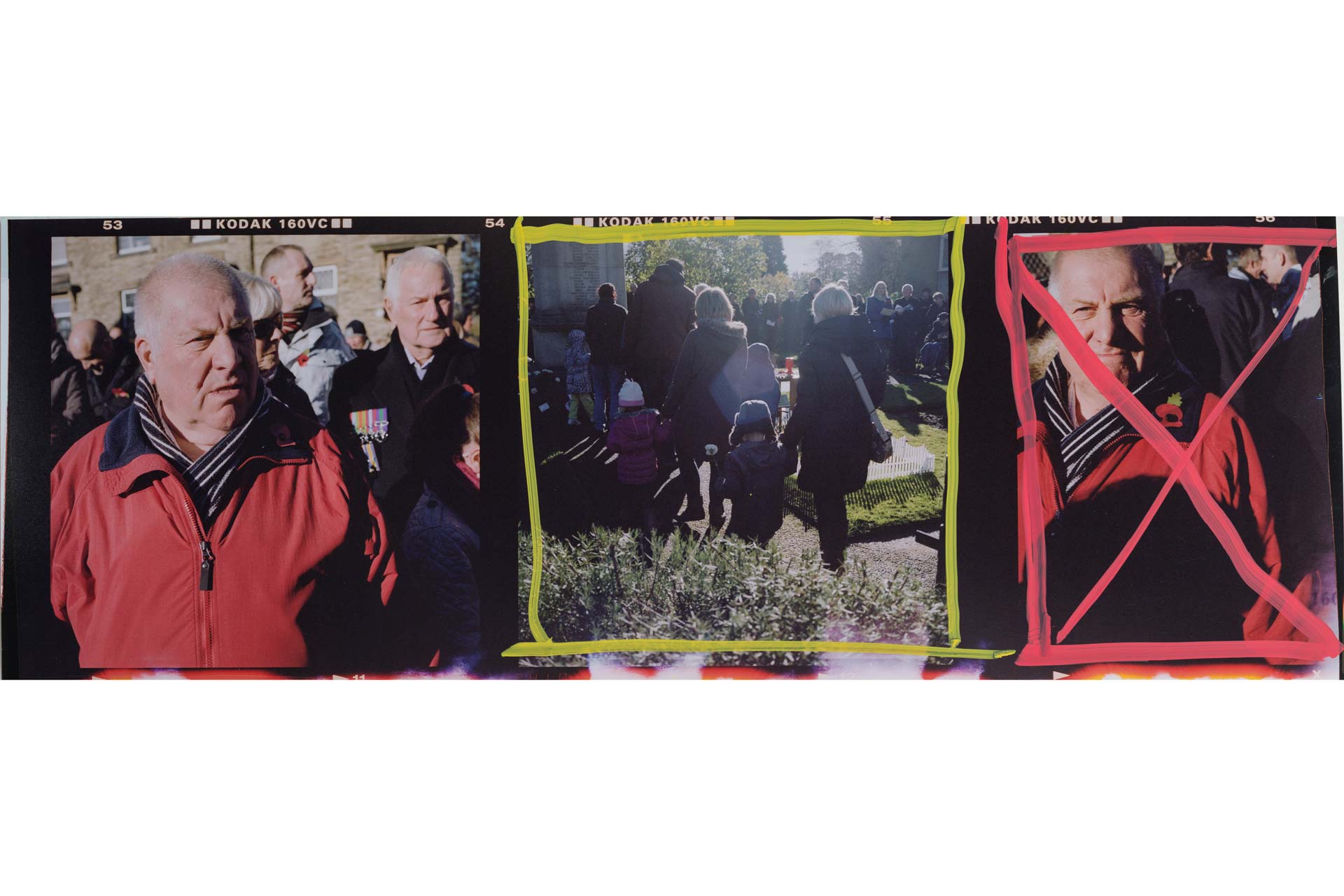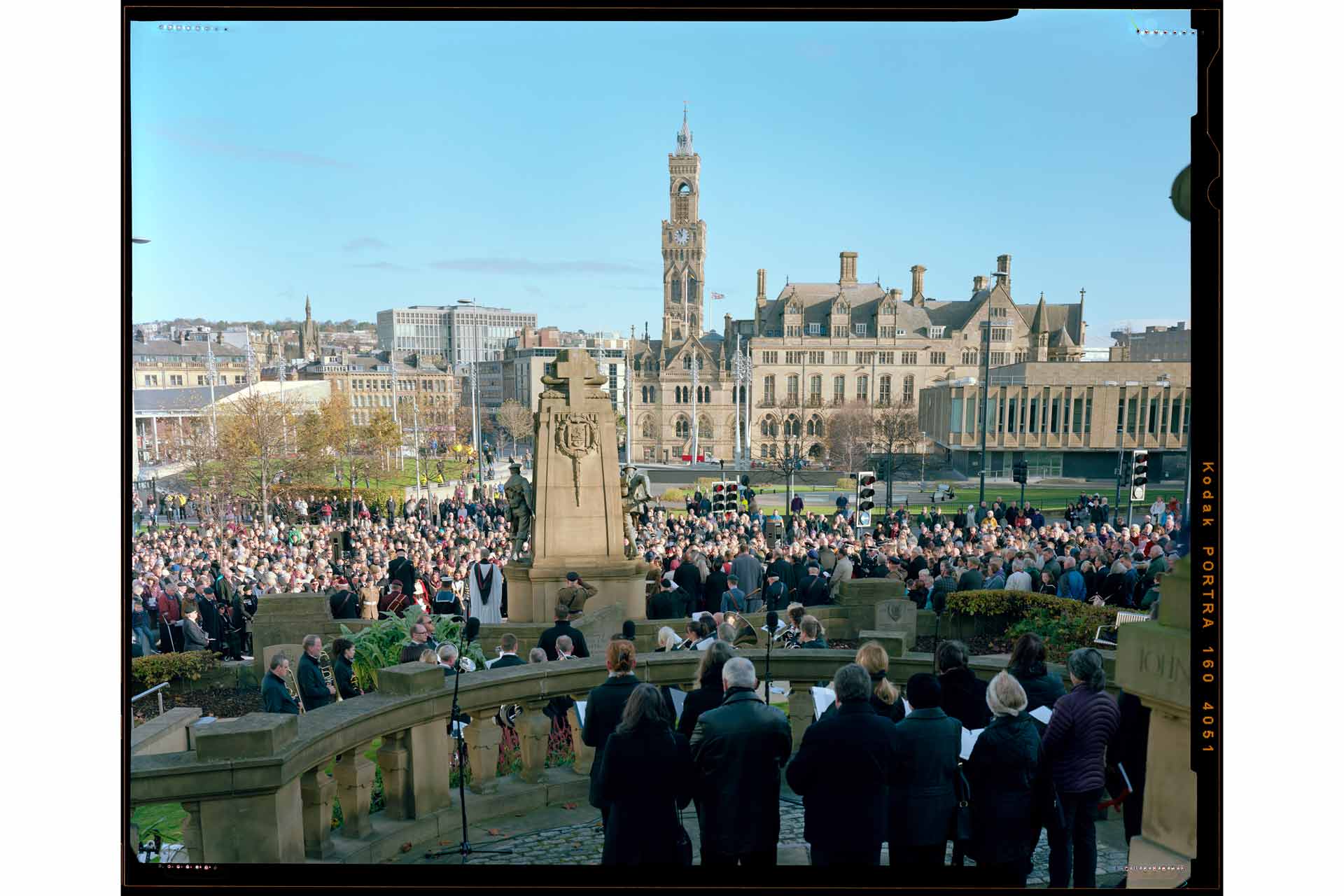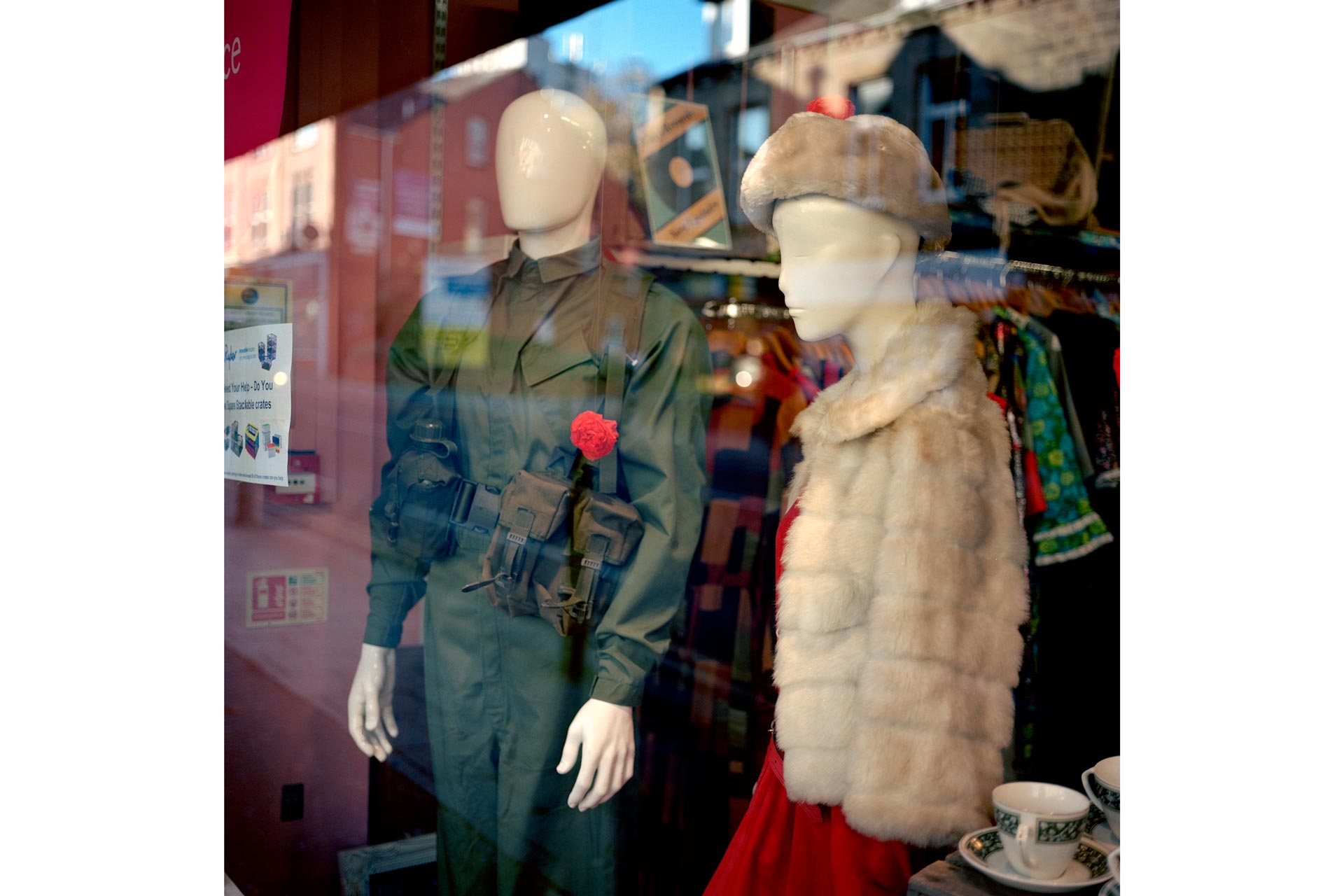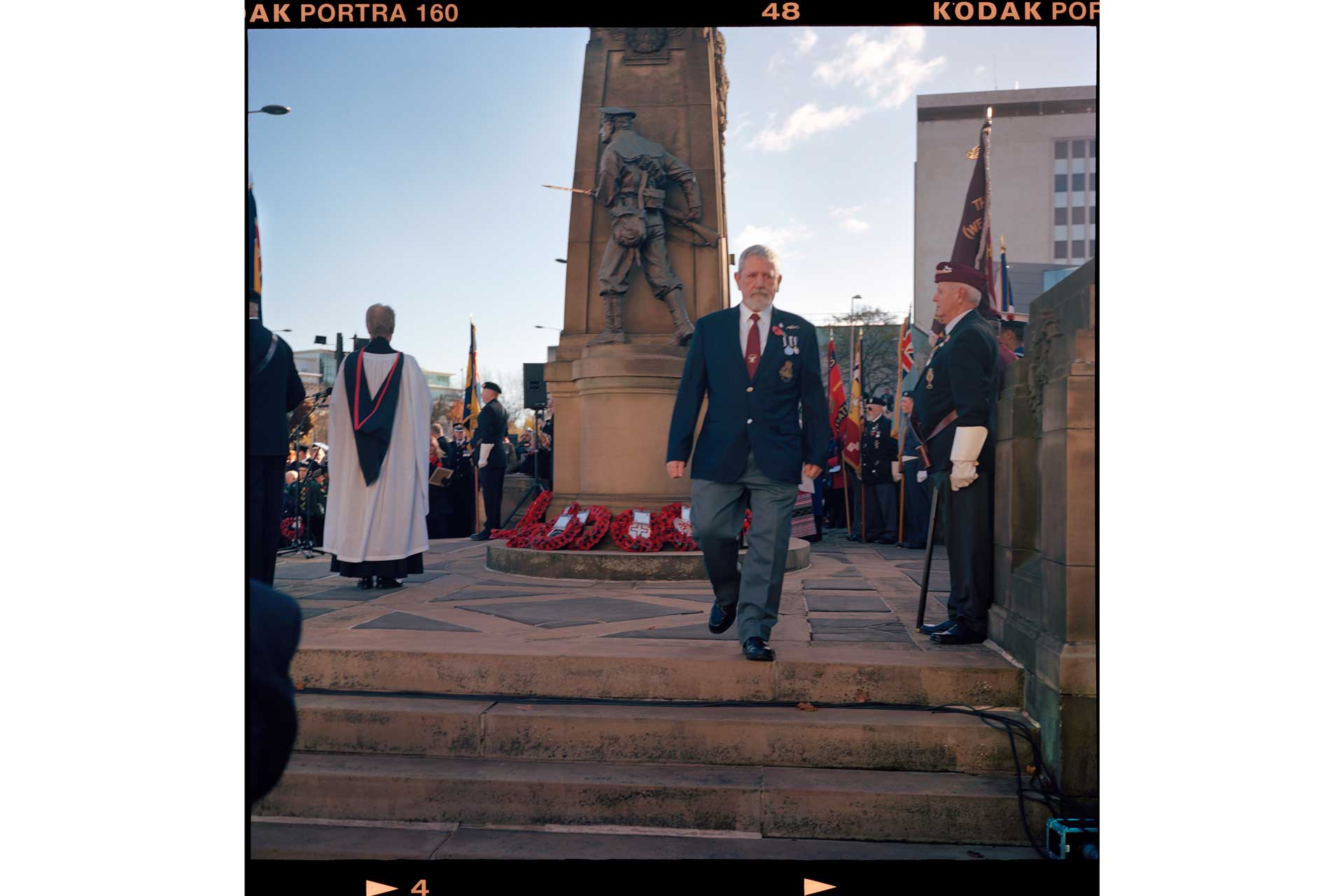Empire of Memory
About the exhibition
The Empire of Memory exhibition used contemporary photographs alongside archive material, family albums and public records, in order to show this relationship between remembering and forgetting. The combination of images, from the everyday documentation of a place to the unique properties of film photography - jammed mechanisms, accidental double exposure, negative rebates, marks of selection and chance light leaks - allude to the 'after-shocks' and reverberations of war in the present day. Clarkson writes:
"Prompted by a commemorative coin bequeathed to me by my father, I began to consider that conflicts in many instances may be fought in the memories of citizens rather than on actual battlefields and, as such, require alternative approaches to their visual depiction."
The exhibition addressed questions such as: what do we believe in? Why do conflicts keep recurring? Personal responses can assess these collective memories of a nation and may persuade us to consider our own role in the process of reflection and possible healing. As Margaret MacMillan states: "if we can see past our blinders and take note of the telling parallels between then and now, the ways in which our world resembles that of a hundred years ago, history does give us valuable warnings".
About the researcher
Garry Clarkson is a Senior Lecturer in the Department of Art and Communication at the University of Huddersfield. He began his career in 1985 as a newspaper photographer. His pictures of Salman Rushdie's controversial book The Satanic Verses being burned in his home city of Bradford were published widely, including The Independent, Sunday Telegraph, New Statesman/Society, New Internationalist and Channel 4 Television and were included in the 1989 'Pictures of the Year' in The Guardian.
Clarkson studied film at the University of Westminster (1994) and an MA in Documentary Photography from the University of Wales, Newport (2005), after which he worked on editorial and exhibition projects, notably: Libération, France; Saturday Times Magazine, UK; and Dominical, Spain. in 2008 Garry was selected as one of 70 participants from 42 countries to take part in the Descubrimientos (Discoveries) platform for the promotion and dissemination of works by 'emerging international photographers'.
Clarkson is interested in the definitions of 'documentary' in all its forms: film, video and photography as well as written and oral histories. His study of the codes and conventions of realist modes of photography since 1988 is supplemented by an interest in disrupting a journalistic way of working through the incorporation of more self-conscious artistic strategies.
